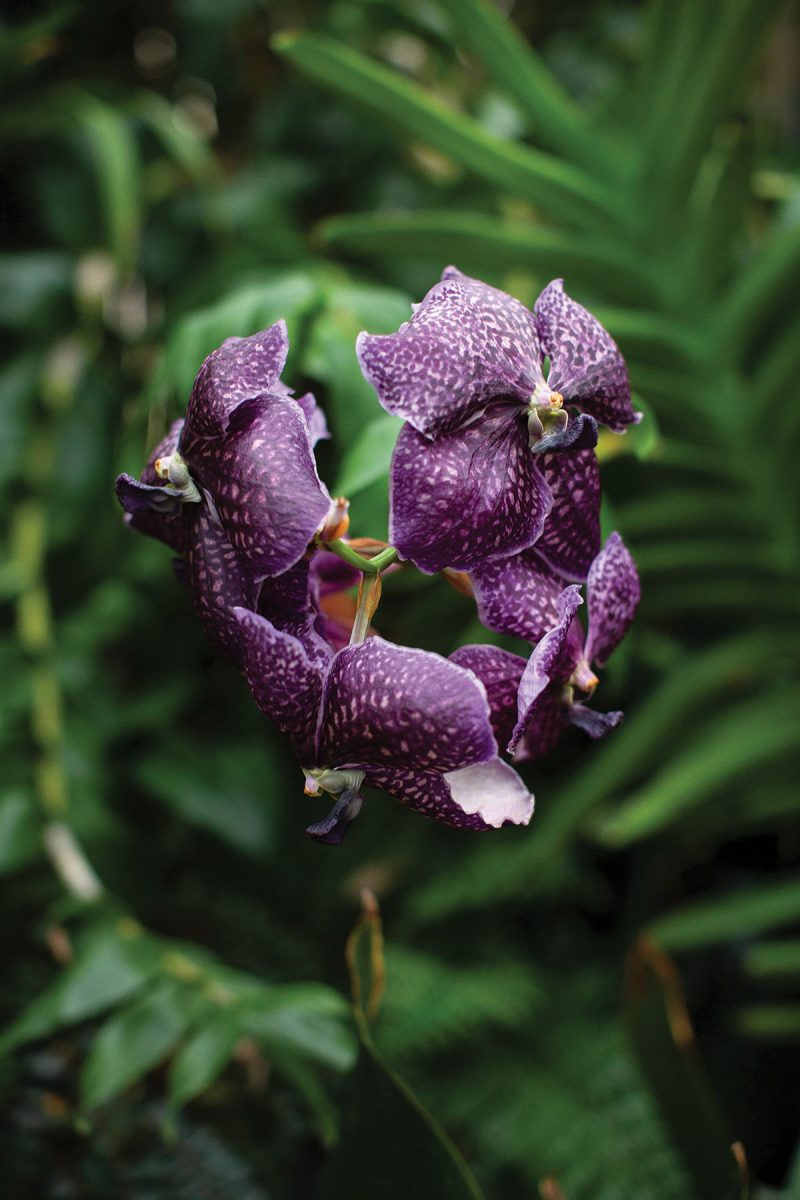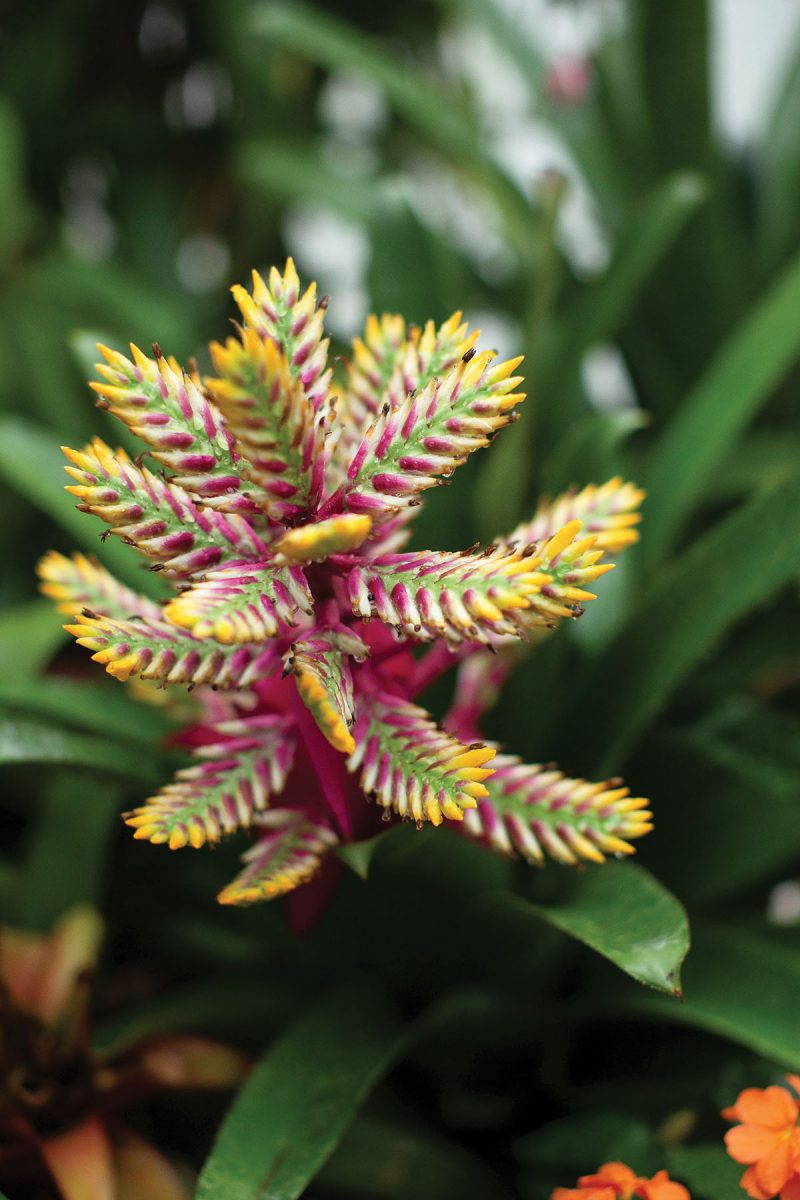The all-season conservatory at Biltmore has bloomed under new direction

Photo by Colby Rabon
When Conservatory Horticulturist Todd Roy arrived at Biltmore in 2016 to assume responsibility for the indoor gardens, he brought two decades of experience with him — 100 years fewer than the estate’s glass-roofed greenhouse, completed in 1895 and designed, like the house itself, by architect Richard Morris Hunt.
Initially, plants were chosen by George Vanderbilt and the estate’s landscape architect, Frederick Law Olmsted; species included palms, ferns, orchids, azaleas, roses, and violets. “There weren’t a lot of plant collectors and plant hunters back then — they sent out requests for the plants they wanted and started propagating the ones they got to increase their inventory,” says Roy, who spent more than a decade caring for the plants at another historic site, the Edison & Ford Winter Estates in Fort Myers, Florida.

But when Vanderbilt brought his new bride, née Edith Stuyvesant Dresser, to the estate in 1898, she indulged her passion for horticulture and expanded the collection.
Roy says once he spent time in various areas of the Conservatory — the Palm House, Orchid Room, Hot House, Cool House, and Exhibit Room among them — he committed to increasing the quantity and diversity of plants even more. “We want to create the impression for guests that they are walking into a lush, tropical rainforest, and not a greenhouse.”

Photo by Colby Rabon
In Vanderbilt’s day, the Conservatory was more functional, as a greenery and floral grower for the house, and a place where guests often gathered to socialize. Today, while the Sitting Room is a popular wedding site, the Conservatory is enjoyed as an expansive and ever-changing display. Visitors make their way from the house to the far end of the Walled Garden to spend time marveling at everything from enormous palms that graze the 40-foot-tall ceiling to exotic orchids from South American cloud forests.

Are there any plants original to the Conservatory of 1895?
Todd Roy: No, the oldest one [a Queen Sago palm] is about 90 years old. One of the things we’ve done is reference George Vanderbilt’s original receipts to obtain plants to correspond with what he ordered. Preservation is our mission in everything we do on the estate.
With so many rooms and so many plants, how can guests best enjoy the experience?
New protocols are in place that moved our entry from the Palm Room to the rear, and directional markers are on the floor so there’s only one way to walk through the building. Typically, people look at things at eye level, which means they miss a lot. There is a lot going on overhead and below, so guests should change their focus to take it all in.

Photo by Colby Rabon
Do rooms change with the seasons, like the outdoor gardens?
The Conservatory rooms change a little every day as we move plants and as different things bloom. But we have three major change-outs a year: In the spring, with [the event] “Biltmore Blooms,” we bring in forced bulbs and other spring flowers; in the summer, the Biltmore Gardens Railway is set up; and then “Christmas at Biltmore,” which remains into early January. We will build a poinsettia tree in the Exhibit Room and place quite an array of unusual poinsettias in the other rooms.
In winter, the Orchid Room puts on a big show; they bloom best January through March. Orchids are scattered about the building, but the predominant collection of over 1,000 is in the Orchid Room.

Why is the Hot Room hot and the Cool Room cool?
Originally, the Hot Room was tropical and the Cool Room subtropical. We have changed that somewhat to display warm-color and cool-color themes in those and other rooms. Because the Sitting Room is frequently used for weddings, we keep it mostly white and neutral.

How do you maintain and care for so many plants?
We water every single day by hand, using hose reels, because every plant has different water needs. Some get watered every day, some just once a week. It changes in the winter as the days get shorter; when there is no sun, you have to back off a bit. You really have to know and see your plants. A plant will tell you what it needs.
The Conservatory at Biltmore is open year round and included in general admission to the estate. Seasonal plantings for “Christmas at Biltmore” are on display through Jan. 6. For ticket information see biltmore.com.
